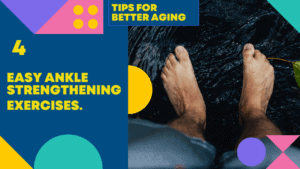I’m assuming you read my previous post about Posture. If not, go… right now, Posture and Poise are deeply connected, so you will need it.
According to the Oxford Dictionary, Poise is defined as:
- Graceful and elegant bearing in a person. Similar to balance, equilibrium, control, grace, gracefulness, presence.
- Composure and dignity of manner. Similar to composure, equanimity, self-possession, aplomb, presence of mind, assurance, coolness…
According to Google, it was more used around the 30th and 50th.

can’t imagine why?
As you can see, Poise is both a quality of the body and the mind. As you deepen in your studies about dancing and movement, you will notice that these two elements, body and mind, will appear more and more intertwine the further you go.
When relating to the mind, poise speaks about self-confidence, slowing down, thinking before talking, being kind and generous, inner grace, but in direct link with how your body impersonates and communicates these qualities. Again, significantly linked to manners, etiquette, and posture.
Regarding the physical aspect of Poise, Ballroom Dancing refers to it as the “pitch of the body and placement of the body weight relative to the feet.” Thus, we define three different poises.
Table of Contents
Backward poise:

The weight of your body is situated mainly on your heels. So while it’s a valuable tool for some dances, walking on Backward Poise will jeopardize your balance reaction time and, in the long run, might injure your knees and lower back, the main points of tension supporting your body when poised backward.
Backward Poise also makes it challenging to step or walk backward, a straightforward activity that becomes very relevant as we age and is one of the leading causes of falls and injuries in adults 65+.
Neutral poise:

The weight of your body is equally distributed among metatarsi, arches, and heels.
Forward poise:

The weight of your body is located mainly over your toes and metatarsi. This is the most active of our poises; it allows faster reaction times and 360° movement possibilities. When poised forward, the body exudes confidence and energy. Also, main muscles groups like your abs and back muscles are engaged in this poise which helps reduce the pressure in joints and articulations, aiding in the skeletal support of your body.
If you were to do any fast-paced dance like swing, salsa, or activities like boxing, you want to be in Forward Poise.
Action Item #1, Try it:
Just stand as straight as possible and slowly shift the distribution of your weight on your feet. Make sure you are holding to a chair or wall so you won’t lose your balance. Next, feel your body weight on your heels, move it towards your arches and continue to your toes. Repeat a few times until you understand how it feels and how it changes your entire body’s disposition.
Action Item #2, Strengthen your ankles, abs, and back:
You will need to strengthen your ankles to control and change between poises without the risk of losing your balance. Your abs and back muscles also play an essential role by providing your body support, balance, and alleviating pressure from joints and articulations.
Balance will be the subject of the following edition of our segment Tips and Routines for Better Aging. But before here, I leave you with some exercises specially designed to strengthen your ankles and feet, abs, and back to make you more Poised and Graceful.
All dance-inspired because “Why make it easy if you can make it fun.”
Make sure you subscribe for more tips, routines, and info on using dance to better your aging journey. Also, you can follow us on Instagram and Facebook where we post bite-size versions of these posts and lots of interesting and funny content.







